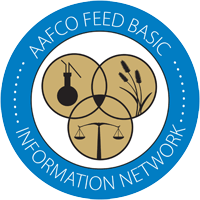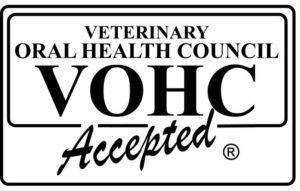Your dog is your most loyal, trustworthy friend. While having a dog can be therapeutic, fun and beneficial to you in many ways, it can also be stressful. Your dog cannot make his own decisions and depends on you to make all the best choices to keep him happy and healthy for a long time. That includes taking on the overwhelming task of choosing the best dog food out of the vast array of dog foods that are available today.
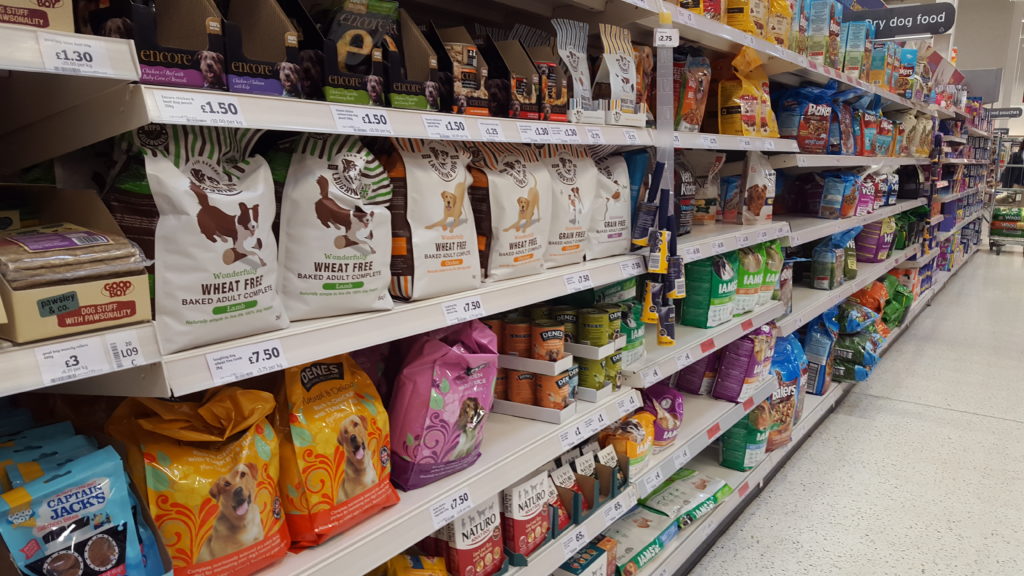
Important Factors To Take Into Account When selecting Dog Food
Life-Stage
At each stage of life, your dog will have different nutritional needs. It is important you are purchasing dog food that meets these needs. The label on the dog food you purchase will be marked and say for all life-stages, adult maintenance, for puppies, or something along those lines. Most brands will also have feeding instructions for each life-stage.
The recognized life-stages for dog food are:
Gestation/lactation when they are pregnant and nursing
Pregnant or Nursing Dogs can need up to eight times more energy than a normal adult dog. A high-protein dog food diet will help her provide the necessary nutrition and care for her puppies and remain healthy.
Growth when they are puppies
Active puppies need a diet consisting of a higher calorie, higher protein, and moderate fat intake.
Maintenance
Older, adult dogs need fewer calories that puppies.
All life stages
This type of dog food is made with all life-stages of your dog in mind and will have guidelines for each stage.
Availability
You will not have a happy pet if you keep changing his food. It is important to choose a dog food that is commonly available in the area you live.
Price
Your dog is also like a child. While you want to make and keep him happy, you also do not want to break the bank in order to provide him with all the nutrition he needs to be happy and healthy for many years to come. The trick is to find the perfect balance of nutrition and price.
Ingredients
And that brings me to the most important thing to look for when purchasing dog food. Ingredients. Dog food has changed and improved significantly over the last few years. You want to ensure all of your dog’s nutritional requirements are met. You also want to make sure you are feeding your dog the best, freshest ingredients. The best choices have real meat, most commonly chicken or beef, as the number one ingredient. Also mixed in with the real meat should be fresh vegetables, such as peas and carrots.
Your pet will benefit greatly from a high-quality, well-balanced meal. His coat will be shiny and sleek, he will have more energy, and live longer. A healthy, nutritious diet will strengthen your pets immune system and keep his digestive system healthy. There is not one best dog food brand or type. Each dog has different needs and you need to choose the dog food that meets and exceeds your dog’s individual needs. Below are some pros and cons for the different types of dog food available:
Dry Dog Food
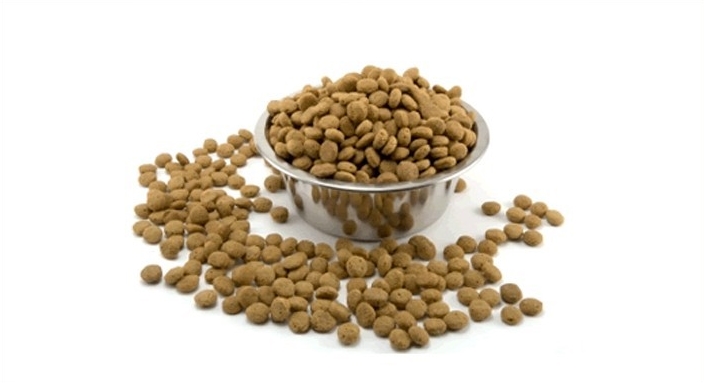
Dry dog foods is an excellent option for many dogs, whether large or small.
Pros:
- Dry dog food has a longer shelf life than wet dog food .
- Dry dog food is often cheaper per serving than wet dog food.
- Dry dog food can be easier to store than wet dog food.
- Dry dog food does not require refrigeration once the package is opened.
- Dry dog food contains less water than wet dog food, so it takes smaller amounts of dry dog food to ensure your pet received all the essential nutrients he needs to stay fit and healthy.
- Dry dog food can help prevent the buildup of tartar, gingivitis, and tooth decay.
- Larger dogs can survive on a diet of only dry dog food, but cannot on a diet of only wet dog food.
Cons:
- Usually contain more preservatives, sugars, and fillers
- Grain such as corn, wheat, and rice is necessary to make dry dog food pellets stick bind
- Not recommended for dogs with diabetes or kidney problems
- Because dry dog food has less water, it may be more difficult to digest
Wet Dog Food
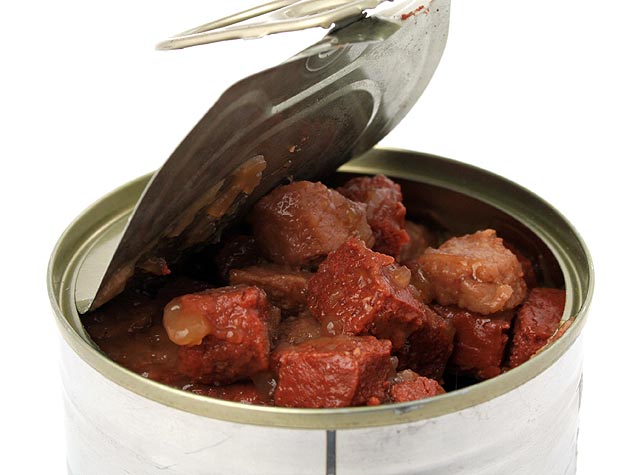
Wet dog food is an excellent choice for small and large dogs. For larger dogs, you may consider a mixture of wet and dry dog food to ensure they receive all the nutrition they need to grow and stay strong,
Pros:
- Wet dog food often tastes better than dry dog food
- Wet dog food is not as hard as dry dog food and is easier for you dog to chew and eat
- Wet dog food is easier and sometimes better to feed to puppies and elderly dogs than dry dog food.
- Wet dog food can be more easily digested than dry dog food.
- Some brands of wet dog food contain more protein and fat
Cons:
- Because it tastes better, wet dog food can lead to over-eating and weight gain in dogs
- Wet dog food does not have as long of a shelf life as dry dog food and can spoil faster
- Wet dog food tends to be more expensive than dry dog food.
- Wet dog food does not possess the same dental benefits as dry dog food.
- Once opened, leftover wet dog food must be refrigerated.
You can also consider mixing dry and wet dog food, or alternating between the two kinds. There are many flavor options and size varieties available to choose from. Your dog may be used to one type of dog food, so switching may take some time. The easiest way to switch is to mix the new and the old together, then reduce the amount of the old one until you are feeding him only the new type of food. When switching dog foods, it is important to watch for any allergic reactions.
Hypoallergenic Dog Food
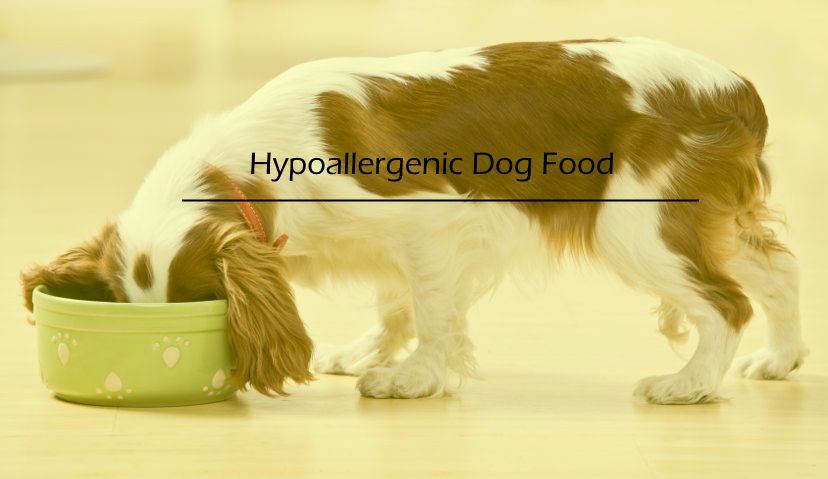
Just like humans, dogs can suffer from allergies. It is important for you, as your dog’s owner and care taker, to know the symptoms of food allergies and take action. Allergic reactions in dogs can be different from human allergic reactions. An allergic reaction may present itself in the form of non-seasonal itching mainly focused on the ears and feet, chronic ear infections, chronic skin infections, vomiting, diarrhea, or excessive gas. For a dog that has been diagnosed with a food allergy, hypersensitivity to certain food or a food intolerance, there are hypoallergenic food options. Hypoallergenic dog foods will contain high-quality ingredients, fewer ingredients, and no flavorings or food colorings. If you are unsure which hypoallergenic food to choose, it is best to speak to your vet for this option so you do not cause any further discomfort for your pet. Certain dog breeds are more susceptible to food allergies. These include Maltese, Pekingese, German Shepard, Bull Terrier, Bichon Frise, English Cocker Spaniel, Brussells Griffon, American Hairless Terrier, Bohemian Terrier, Shih Tzu, Lhasa Apso, American Pit Bull Terrier, Wire-Haired Fox Terrier, Chinese Crested, Poodle, Irish Setter, English Bulldog, Pug, Dalmation, Retrievers, and Miniature Schnauzer.
High-Protein Dog Food

Active, growing puppies can benefit from a high-protein dog food because it promotes muscle, hair, skin, and brain development and growth. Because a lactating female is producing milk and feeding multiple puppies, she requires significantly greater amounts or protein in her diet. Performance dogs, including racing sled dogs, need stronger muscles and burn more calories. High-protein diets provide them all the protein and energy they need to thrive.
A high-protein diet is not recommended for all dogs and can promote obesity. Elderly dogs or inactive dogs should not follow a high-protein food diet. Also, dogs with health conditions or poor kidney function should not consume high-protein dog foods.
Low-Fat Dog Food

If your dog suffers from obesity or another health concern such as pancreatitis, it may be time to switch them to a low-fat dog food to regulate the amount of fat and calories they are consuming. Like their human owners, it is not healthy for your dog to be over-weight. It can lead to worse health concerns and shorten the amount of time they are here to be with you. Low-fat dog food consists of a balance of essential fatty acids, protein, vitamins, and minerals. This may only be a temporary switch until your pet is back to a normal, healthy weight.
Grain-Free Dog Food

Grain-Free dog food is becoming increasingly more popular. It is important to know that grain-free does not necessarily mean carb-free. A dog’s digestive system does not sufficiently digest and process grains such as corn and wheat. Some dogs also have grain allergies which will cause frequent ear infections and constant licking especially on the tops of his paws. If you dog has a grain allergy, then a grain-free dog food is the way to go. There is a down-side to going grain free. First of all, grain-free dog food is significantly more expensive. Also, it contains higher amount of protein and fat which can cause obesity.
Puppy Food
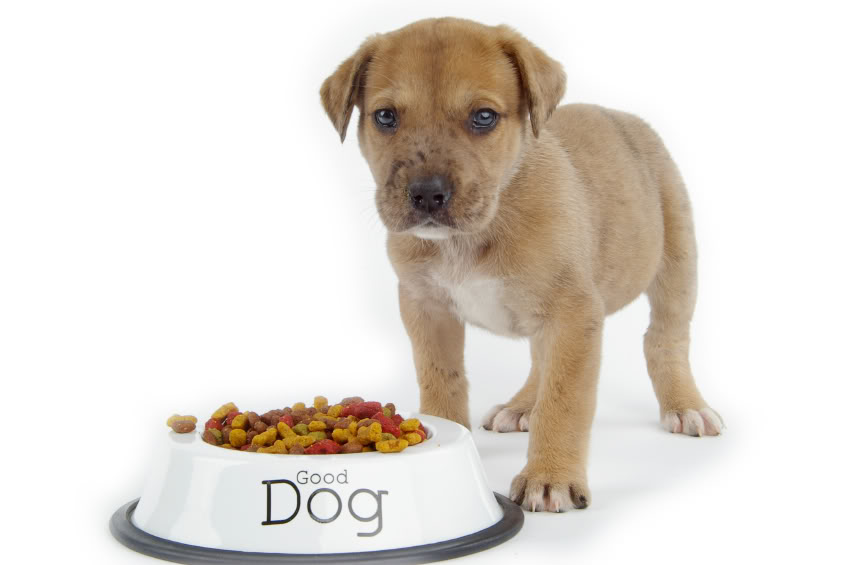
Puppies have different nutritional needs than adult dogs. They require more nutrients, higher vitamin content, slightly higher protein levels, and more fat in their meals in order to grow. While this is not true in all cases, feeding your puppy an adult dog food can potentially lead to skeletal malformations. It is suggested to start feeding puppy food to your puppy when they are three to four weeks old and to gradually switch to adult dog food when they have reached 90% of their growth. Larger breed puppies have special needs in order for their joints to properly support their larger growth and weight. They also may require puppy food for the first twelve to eighteen months of their life.
Low-Protein Dog Food
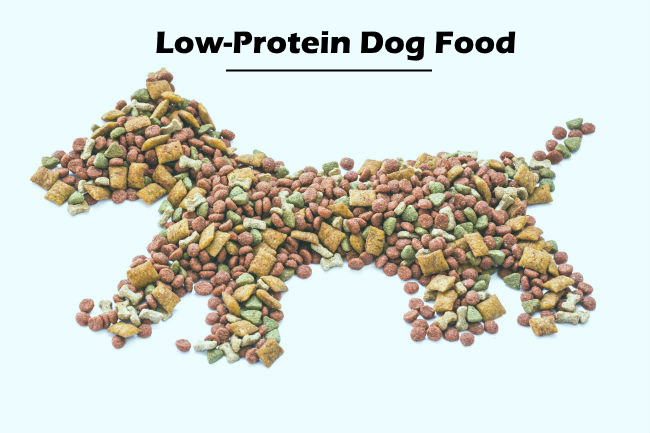
Some say your dog needs less protein when they are older. That is not necessarily true. Most times, the reason an older dog require less protein is because they have some type of disease or illness. Kidney disease, kidney failure, congestive heart failure, and frequent urinary tract infections may require a low-protein diet because it limits the amount of uremic toxins. It is important to look over the ingredient list on low-protein foods to ensure your dog is still receiving all the quality nutrients he needs.
Low-Sodium Dog Food

Larger and smaller dogs can be more susceptible to congestive heart failure. When a dog has congestive heart failure, their body retains excessive sodium, which creates a fluid buildup, makes the heart work harder. It is recommended to feed dogs with congestive heart failure to follow a low-sodium diet.
Kidney disease is more common among older dogs. For kidney disease, it is recommended to feed your dog a low-sodium diet.
Low-Phosphorous Dog Food

Low-phosphorous dog food should only be fed to your dog if recommended by your vet. Low-phosphorous dog food has been shown to slow kidney disease progression in dogs and may be recommended for a dog with kidney disease, unusual kidney function or kidney failure.
Raw Dog Food
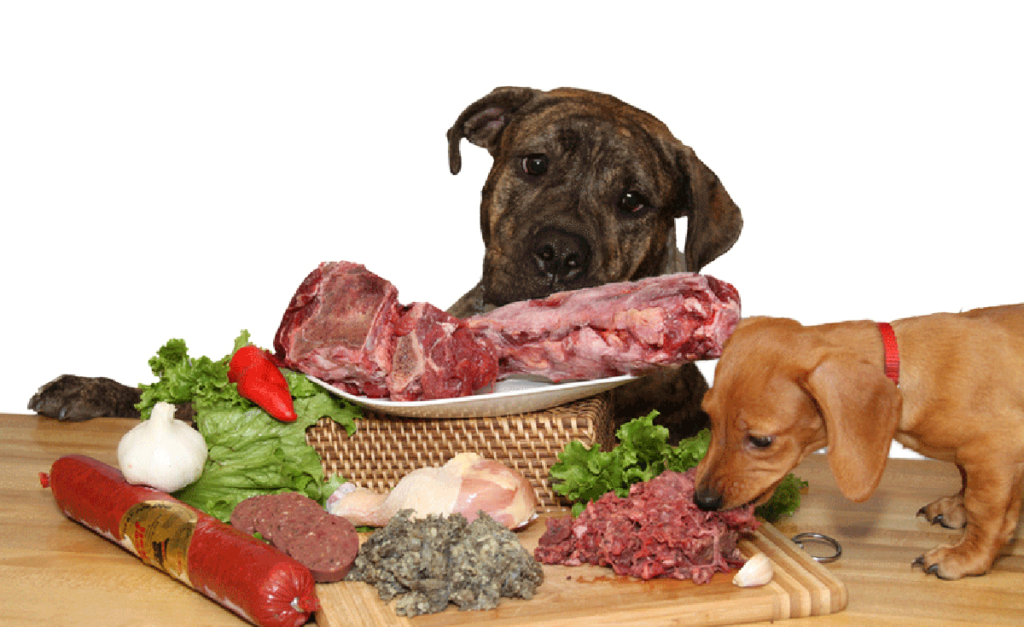
Some vets have recommended a safe raw dog food diet called BARF (biologically appropriate raw food diet). You can find raw dog food formulas in stores that follow BARF standards. A dog’s digestive system differs from a human’s digestive system in that it can tolerate and digest raw meat as well as the bacteria and parasites that live in raw meat. Some studies have shown a raw food diet will help encourage your dog to be more responsive to training, tolerate stress better, and be less prone to aggression. Raw bones are also more beneficial to your pet than cooked bones. They break down easier and contain enzymes and nutrients that help prevent gum disease. A raw food diet can also be ideal for a dog that has food allergies and offers an alternative option to hypoallergenic dog food.
Vegan Dog Food

At this point in time, vegan dog food diets are controversial. Some feel dogs benefit more from a vegan diet, others feel a dog needs meat and animal products in order to live a long, healthy life. A vegan dog food diet consists of mainly fruits and veggies, which means the diet is lacking the taurine, arginine, vitamin A, and the Vitamin B group. These nutrients are found in meat products. While there are some benefits to a vegan diet, such as cancer prevention, easier digestion, and a stronger immune system, there are many disadvantages as well. Muscle spasms, muscle problems, bladder and urinary infections, lethargy, bladder stones, and kidney stones are more common in a dog on a vegan diet.
Different breeds have different nutritional needs and concerns. Remember, dog food is not a one kind feeds all product.
Larger dogs require a diet that supports their joints and larger size and weight. High amounts of salt and corn can be harmful to larger dogs.
Smaller dogs (up to 20 lbs) require more protein and carbohydrates than larger dogs. This is because smaller breed dogs use more energy and have faster metabolism than larger dogs. Due to their size, they should be fed smaller quantities more often, about two to four times a day. It is important to think of size when purchasing dog food for your small dog. A small bite formula dog will be easier for them to eat.
When looking for a healthy, nutritious dog food, read the label. It should read like this:
- #1 ingredient = meat.
Real meat is the ideal first ingredient in any dog food.
Grains are listed in many dry dog foods. Look for a dry dog food that is grain-free or that contains whole-grains over by-products.
The best choice is a dry dog food with white potatoes or sweet potatoes in place of grain products. If you must choose a dry dog food with grains for pricing or availability reasons, select whole grain corn and whole grain barley over corn gluten meal or soybean meal.
- Avoid dry dog foods with artificial colors, preservatives, and sweeteners
- Look for a label on the bag that says the company complies with AAFCO specifications and feeding trials
- If you are concerned with your pet’s dental health, there are dry dog foods that are considered dental-friendly. Just look for the VOHC symbol on the bag.
The AAFCO strictly enforces rules and regulations for dog food labels. It is crucial to your dog’s health that you understand what the ingredient names mean.
- The ingredients listed on a label must be in order of decreasing amounts. This means the number one ingredient will be the biggest contributor and the last ingredient will be the smallest.
- When an ingredient label has the word “Meat” listed, it means that it is muscle tissue, fat, gristle, and tissue from the clean flesh of a slaughtered animal. There is no bone included.
- When an ingredient label has the word “Meat By-product” listed, it is referring to other non-rendered, clean parts of the animal. This includes the lungs, spleen, kidneys, brain, liver, bones, blood, stomach, and intestines. These are typically the parts of the animal that humans do not normally consume.
- When an ingredient label has the word “Poultry” listed, it means the flesh and skin from the whole poultry, often chicken or turkey. It may contain ground bone as that adds calcium.
- When an ingredient label has the word “Poultry By-Products” it is referring to other parts of the poultry, such as the head, feet, and viscera without any fecal matter.
- When an ingredient label has the words “Meat Meal” it means it is rendered product from the tissues of the mammal. This product may come from mammals other than cattle, sheep, pigs, or goats.
- When the ingredient label has the words “Mean and Bone Meal” it is referring to a rendered product from the tissues of the mammal, including bone.
- When the ingredient label has the words “Poultry By-Product Meal” it is referring to ground poultry parts including necks, feet, and undeveloped eggs and intestines.
- When the ingredient label has the words “Poultry Meal” it is a dry rendered combination of flesh and skin, sometimes bone, from the poultry.
- When the ingredient label has the words “Fish Meal” it is the clean ground tissue of a whole fish or fish cuttings.
- When the ingredient label has the words “Ground corn” it is the entire corn kernel either ground or chopped.
- When the ingredient label has the words “Corn Gluten Meal” it is referring to the dried residue left after the removal of the bran, germ, and starch during corn syrup manufacture.
- When the ingredient label has the words “Brewers Rice” it is referring to small rice kernel fragments that were separated from larger milled rice kernels.
- When the ingredient label has the words “Brown Rice” it is referring to unpolished brown rice left after the kernels were removed.
- When the ingredient label has the words “Soybean Meal” it is referring to the by-product of soybean oil production.
- When the ingredient label lists “BHA” it is referring to a fat preservative called butylated hydroxyanisole.
- When the ingredient label says “Ethoqyquin” it is referring to a chemical preservative that prevents the dog food from spoiling.
- When a dog food label says it is “Complete”, this only means it contains all the nutrients required for you dog.
- When a dog food label says “Balanced”, it means not only are the nutrients there, they are there in the correct ratio.
In conclusion, how do you choose the best dog food? Read the label, understand what you are reading, understand that a dog’s digestive system differs from a human’s, and know your dog. It really is as simple as that. You may have to try several brands, flavors, and types of dog food until you find one that you and your pet will agree on and love; but in the end, following the right diet and feeding your dog the proper amount of protein and nutrients will be worth it.

